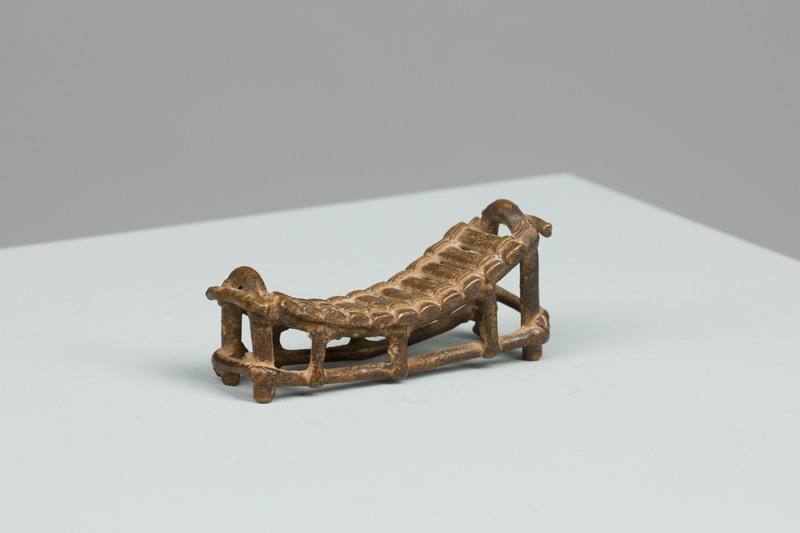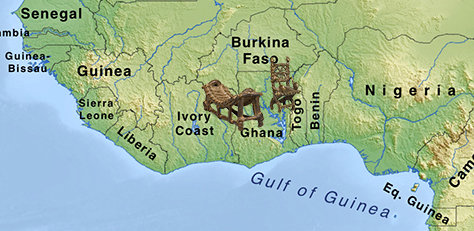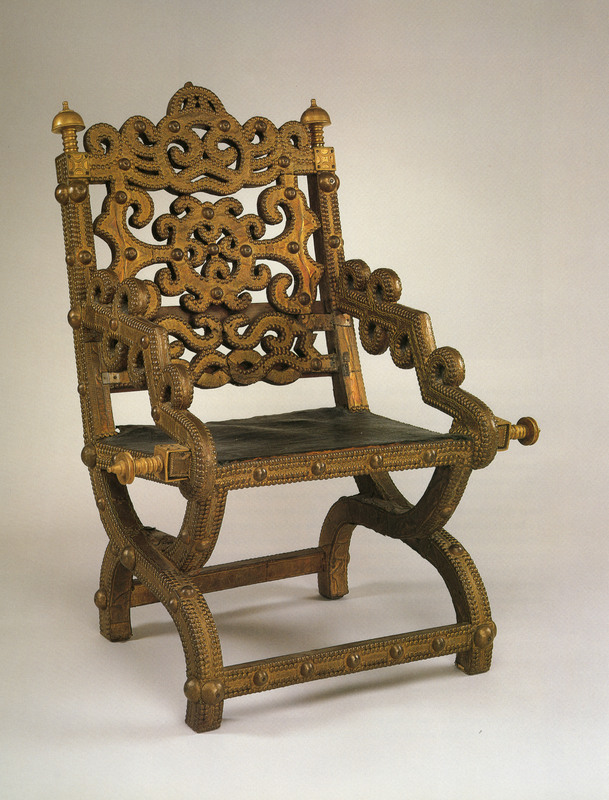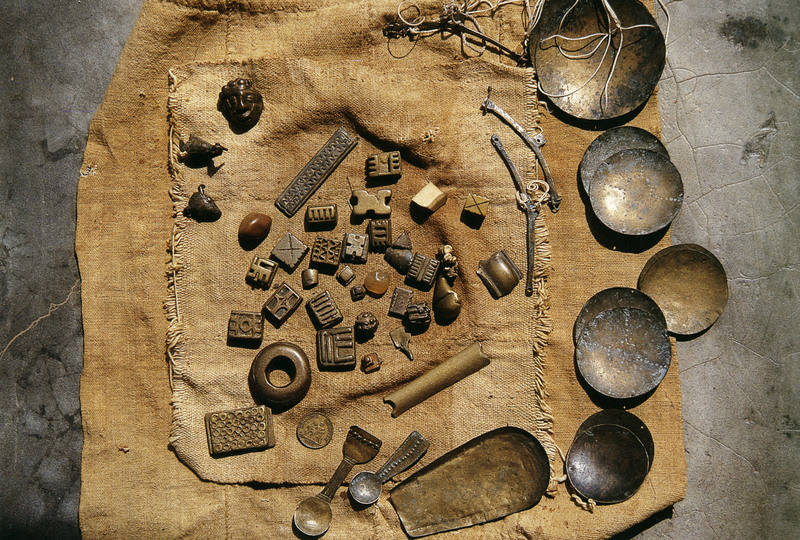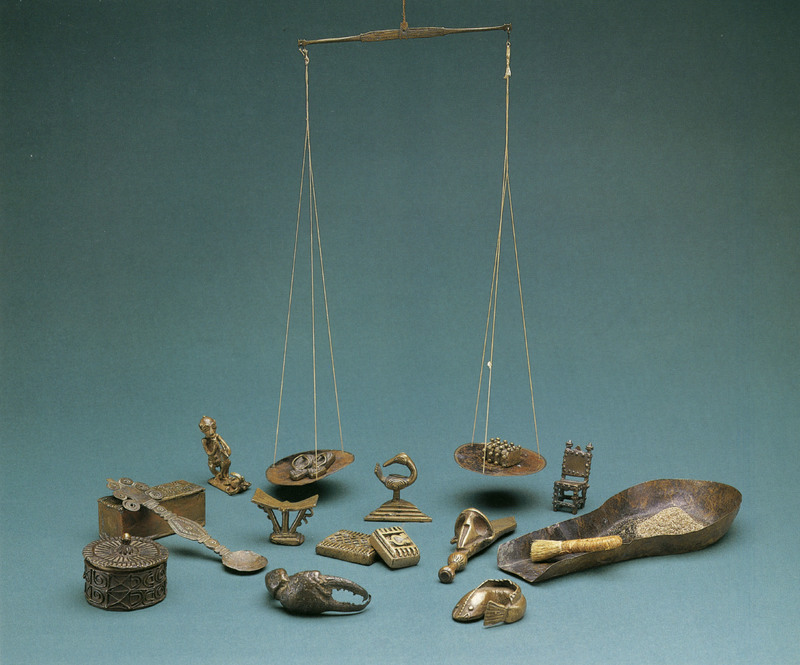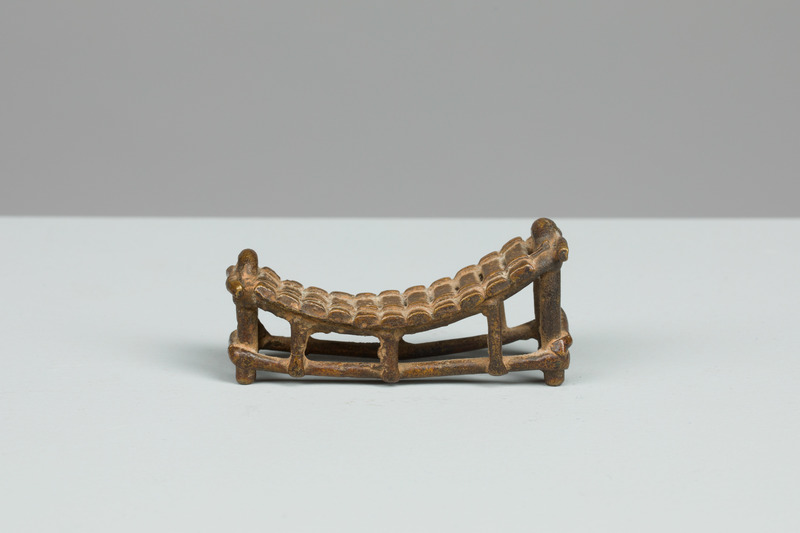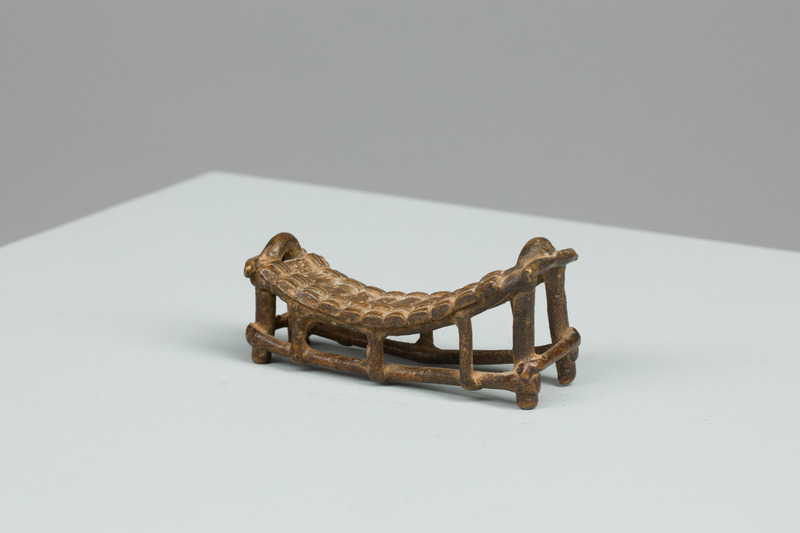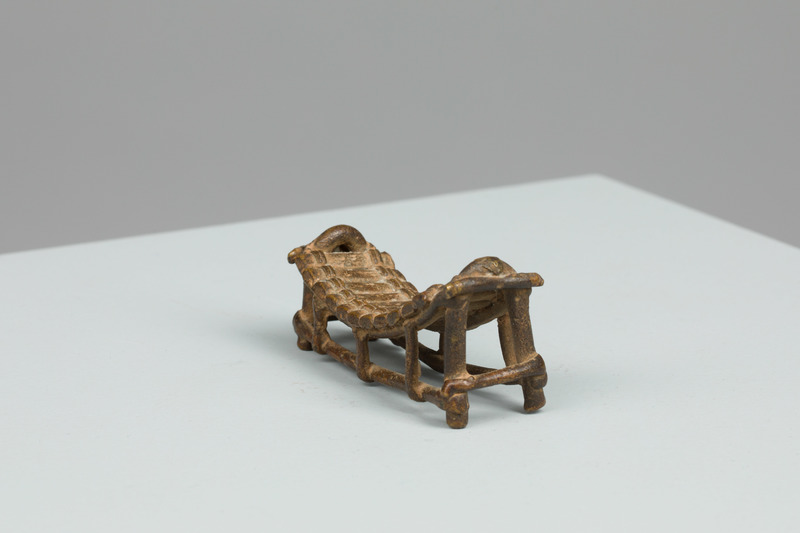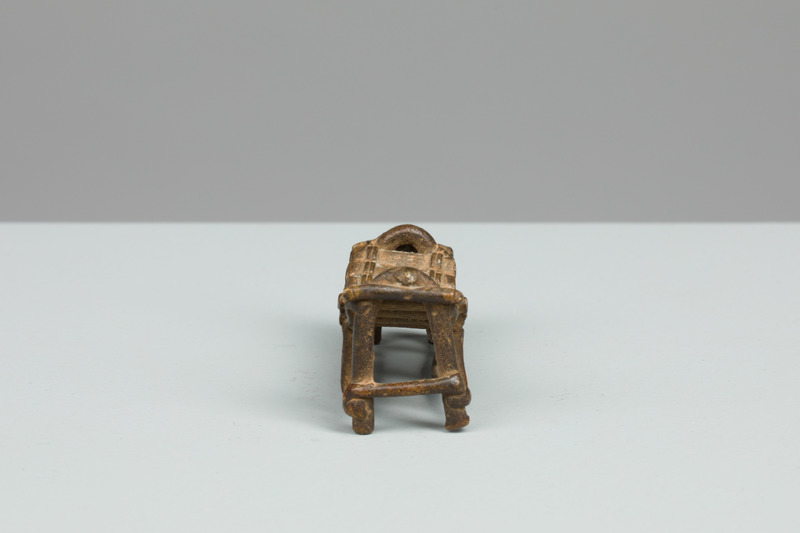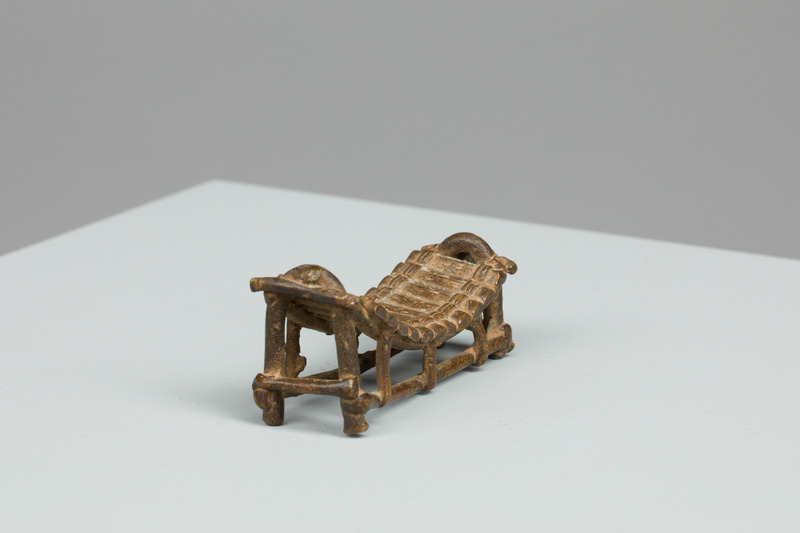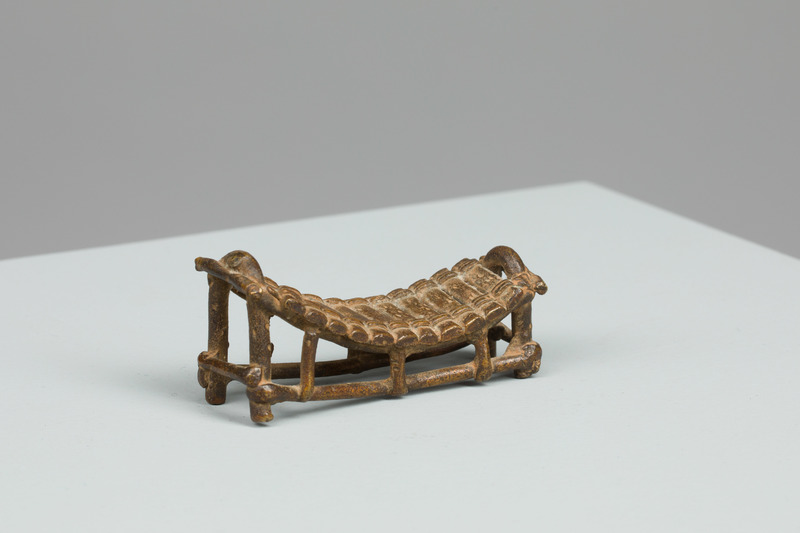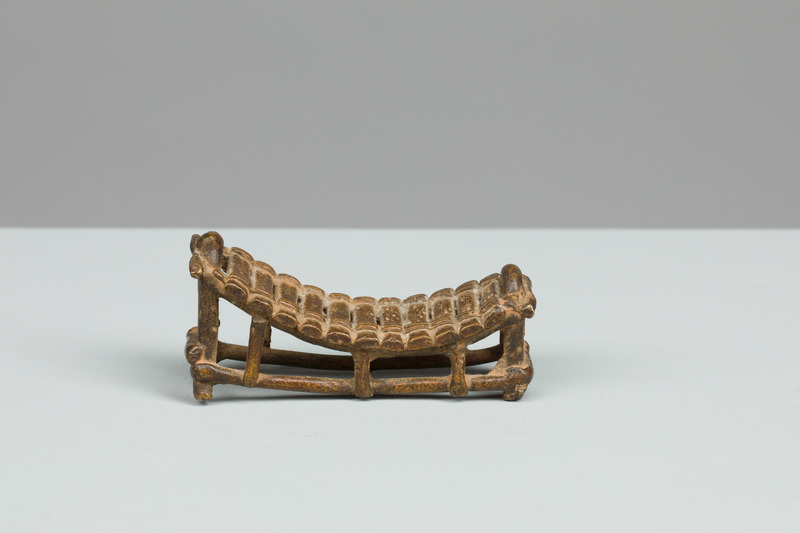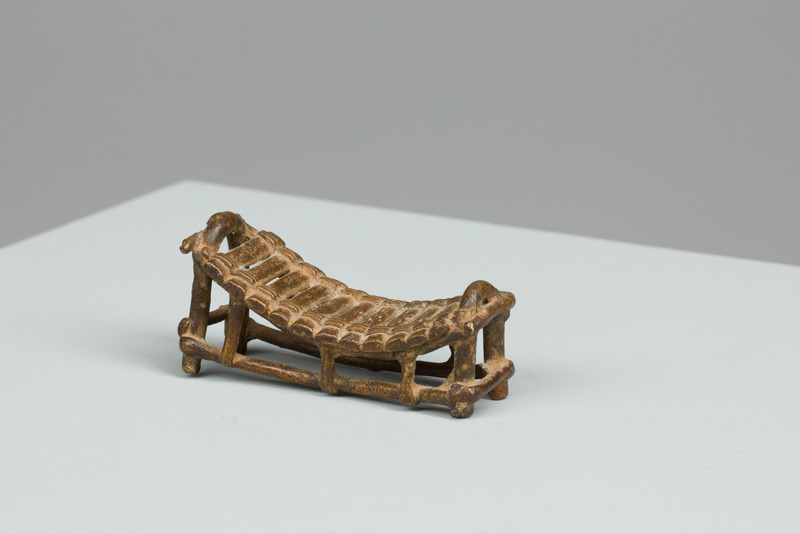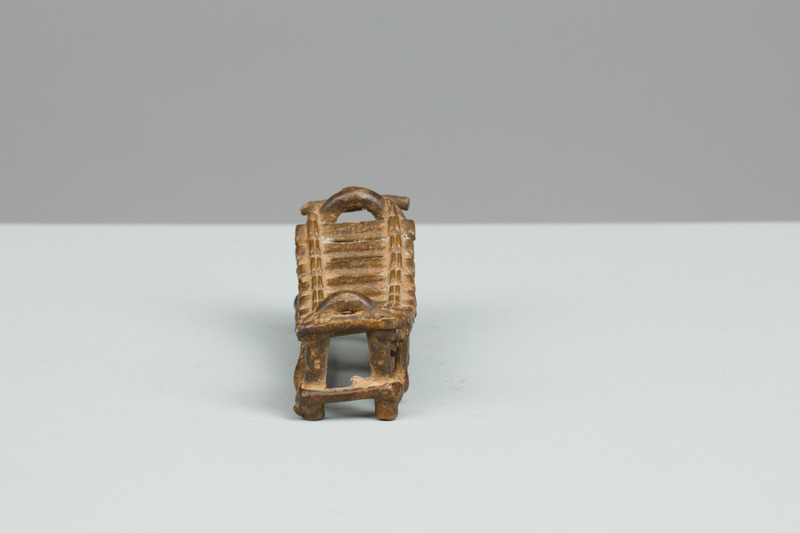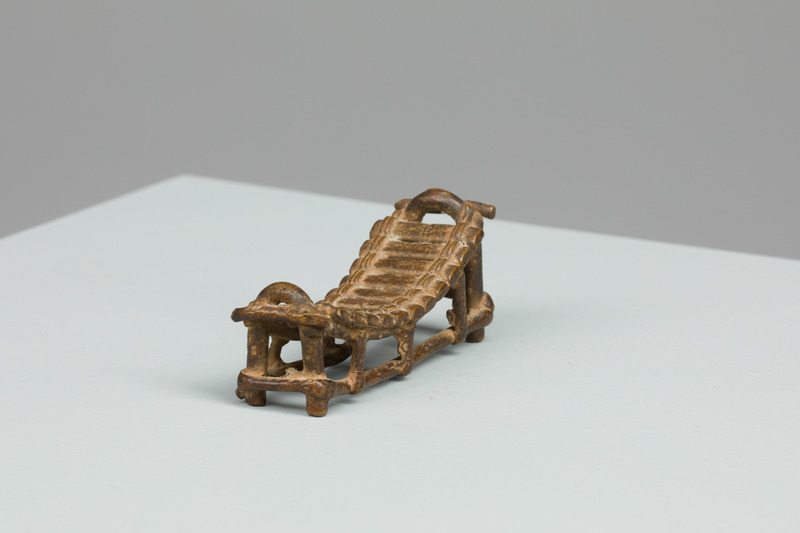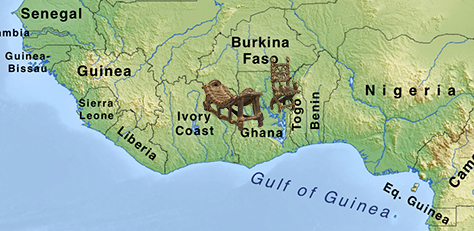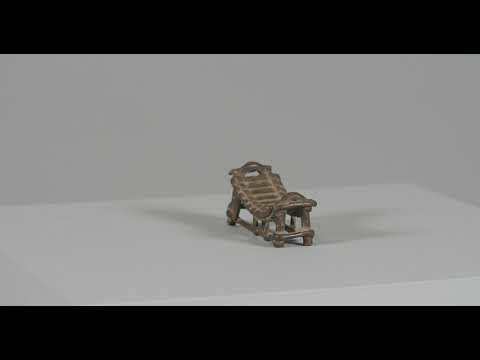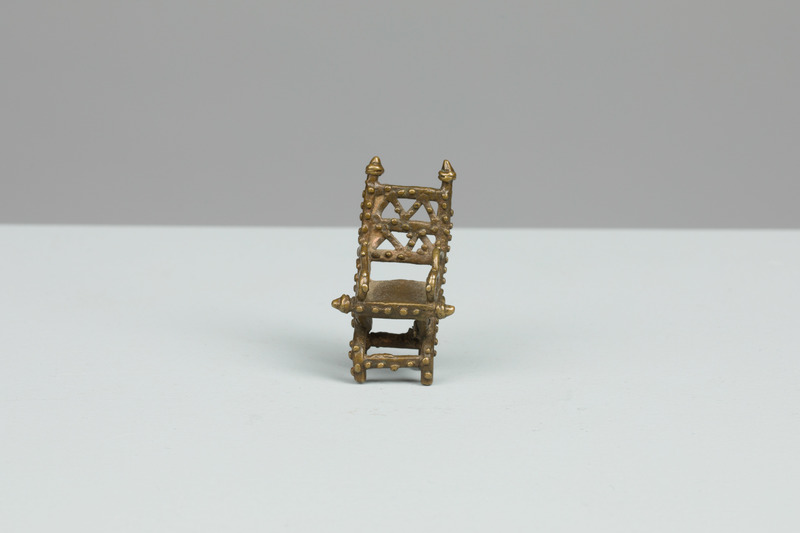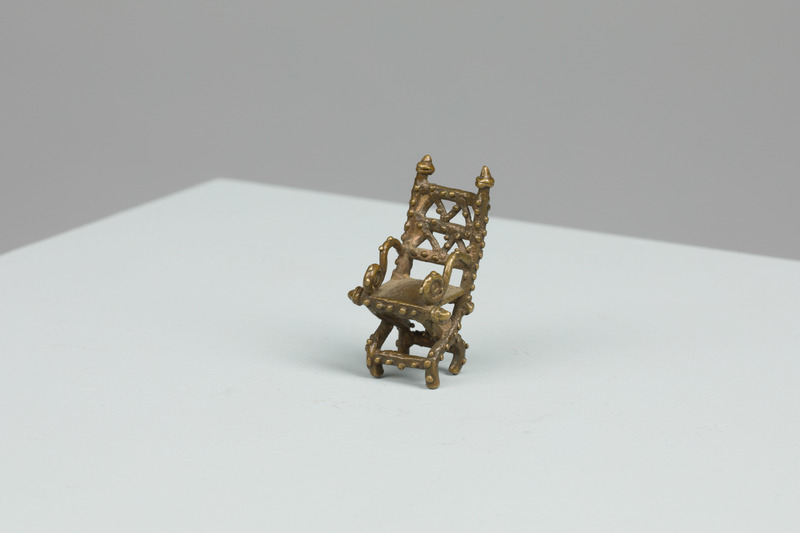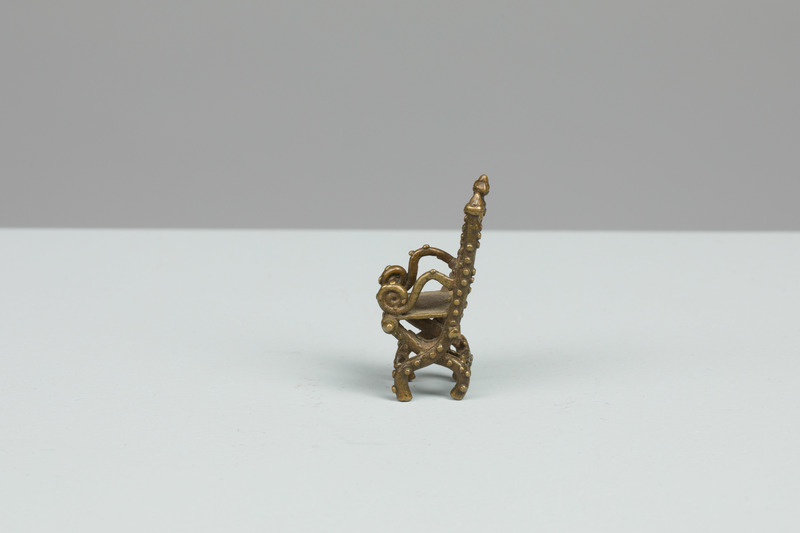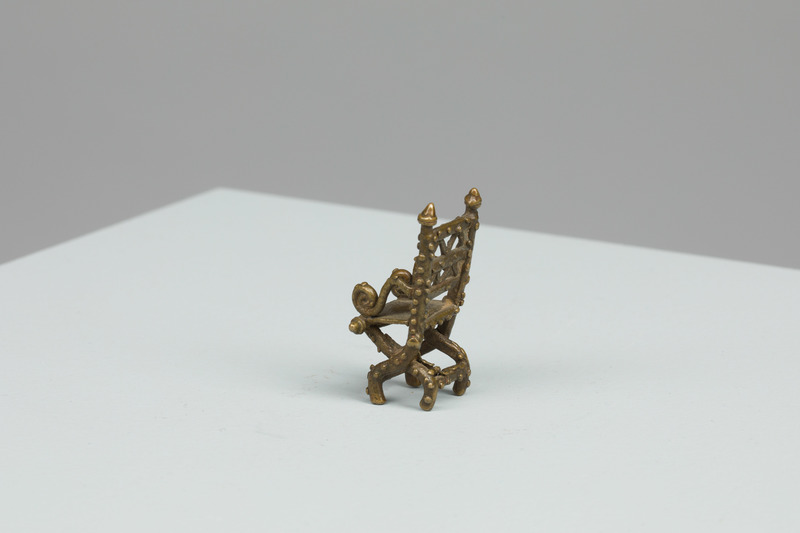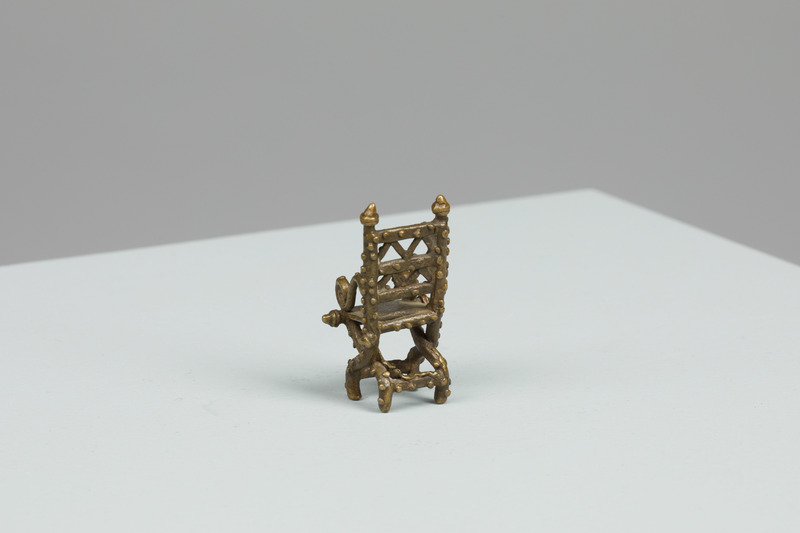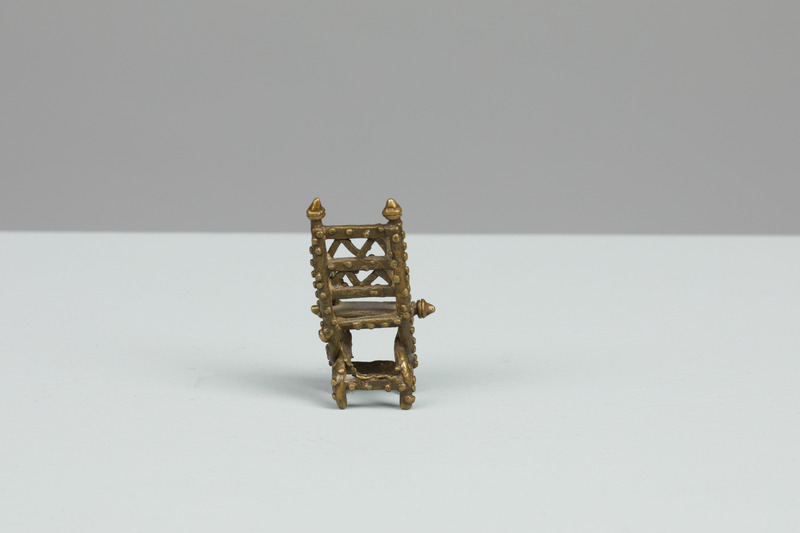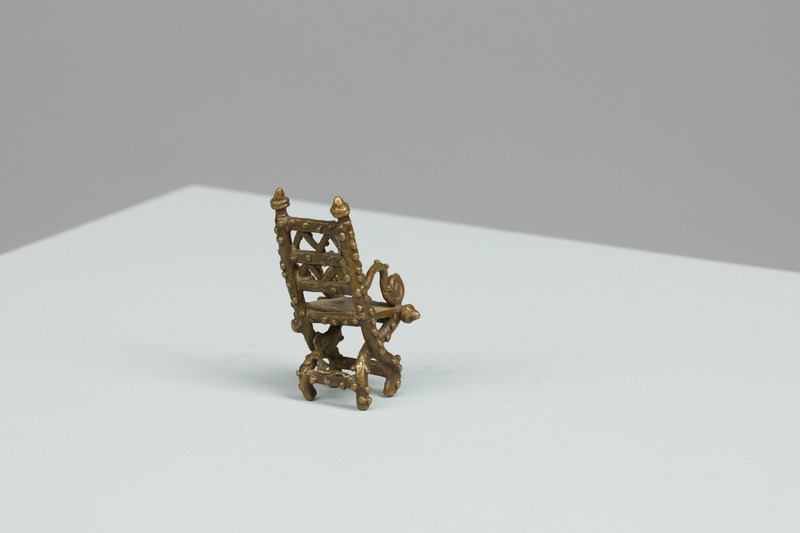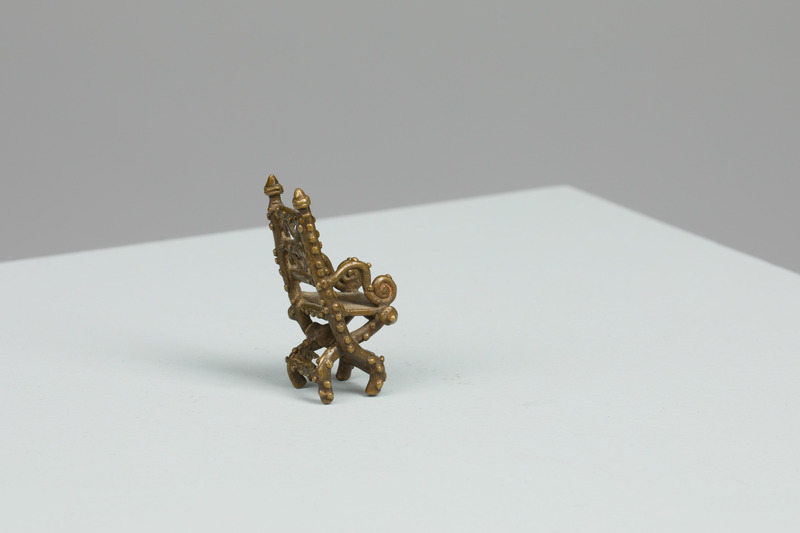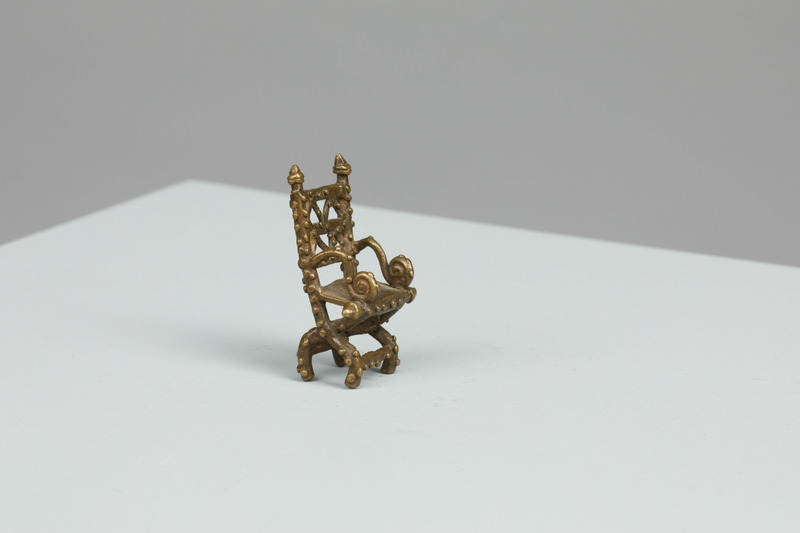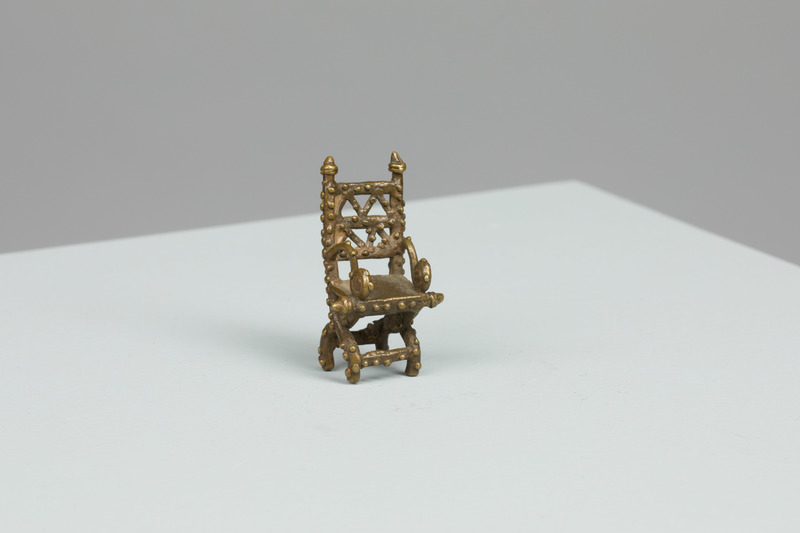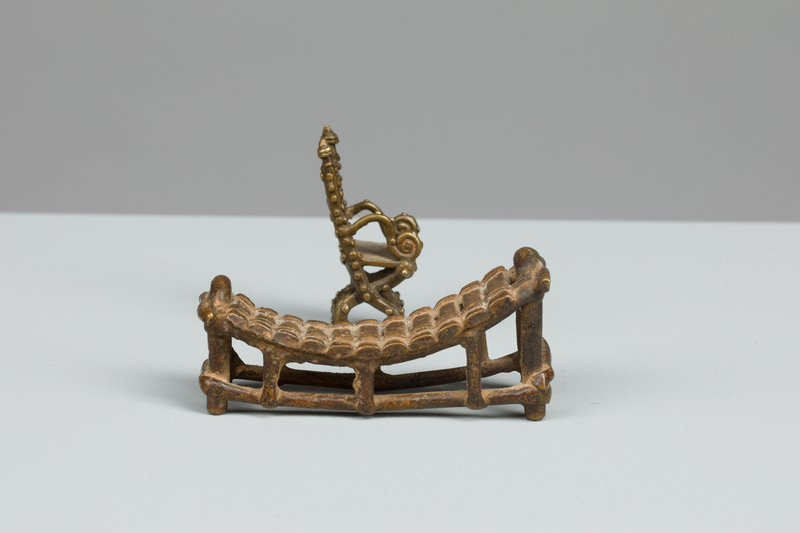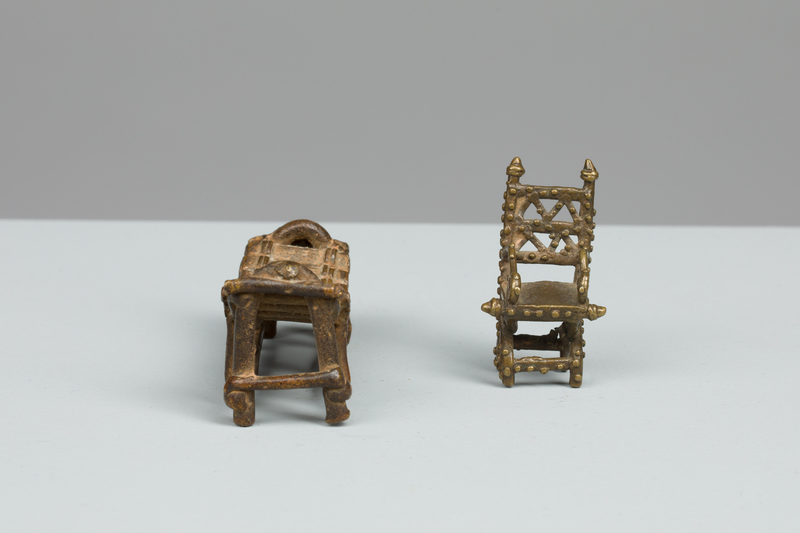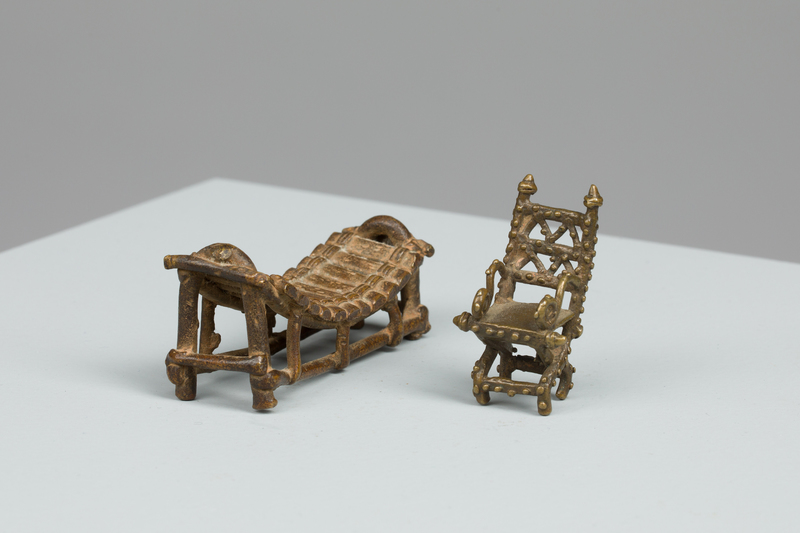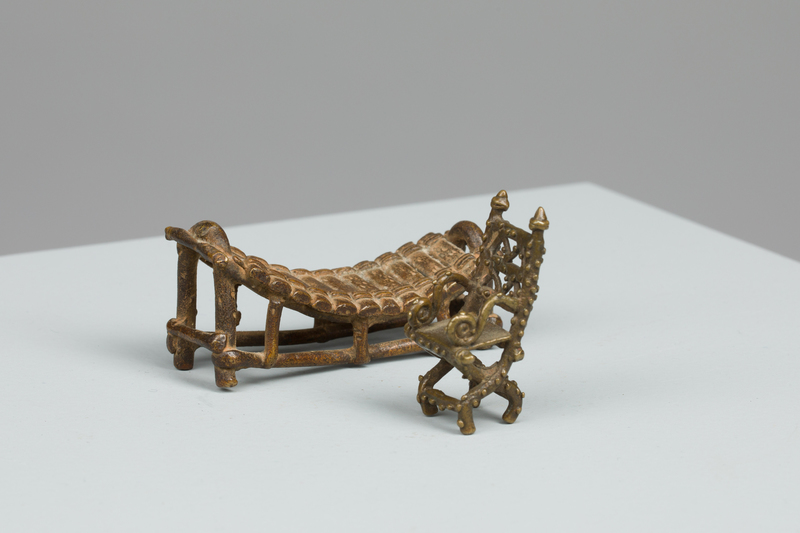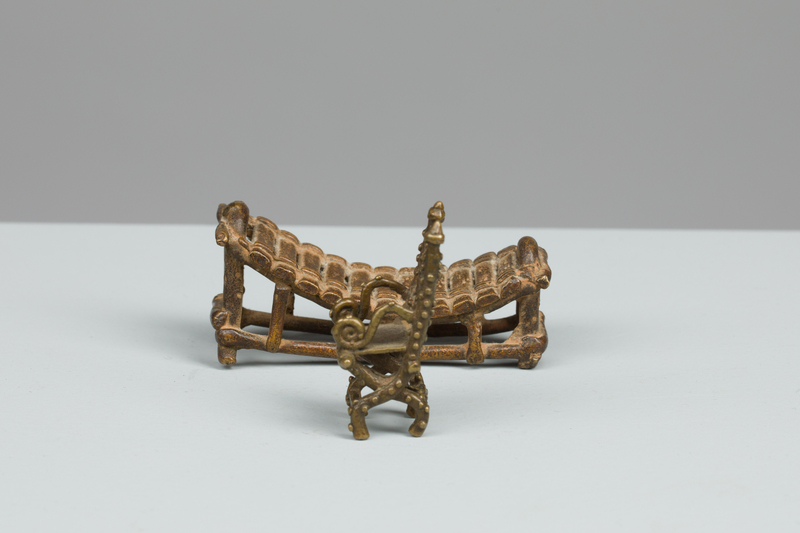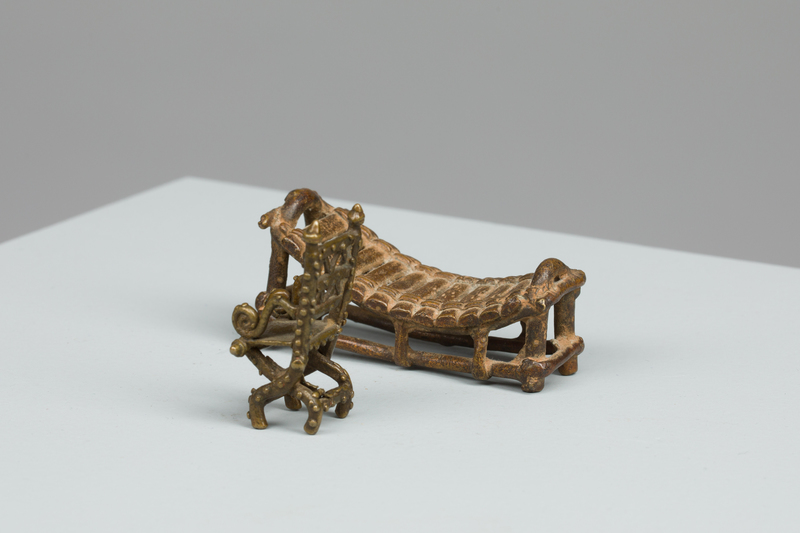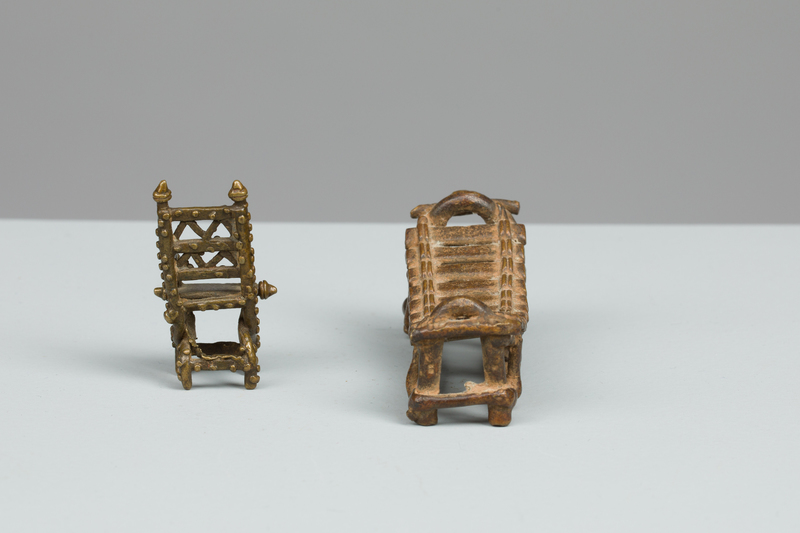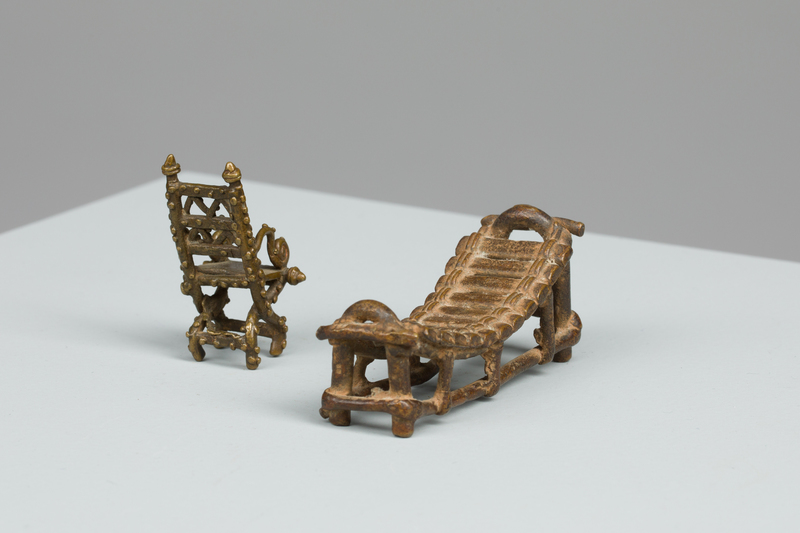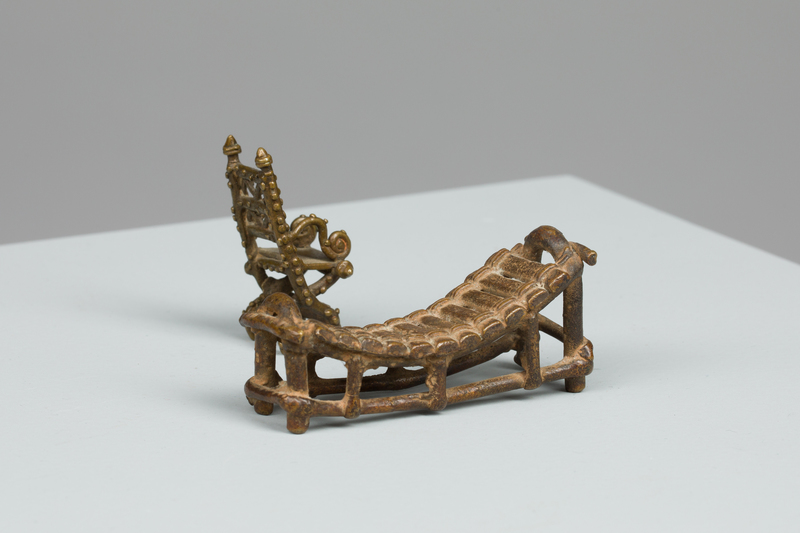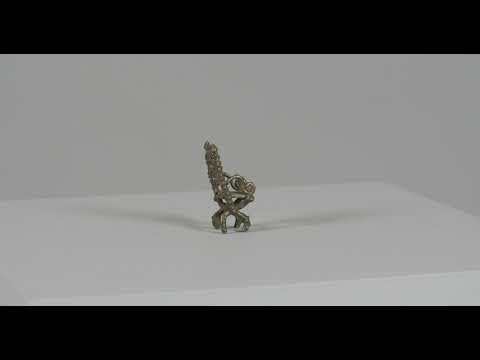Catalogue 22
Gold Weights, abrammuo
Akan people, Ghana and Côte d’Ivoire
20th century
Brass, akonkrom; 1 1/2 x 1 x 13/16 inches (4 x 2.5 x 2 cm); gyil; 1 1/16 x 2 3/4 x 1 inches (2.75 x 7 x 2.5 cm)
Collection of Allen and Barbara Davis
Gold mining was a major precolonial industry among the Akan, and for at least four centuries Akan smiths created calibrated weights for measuring gold dust. The small size of these weights made them portable and easy to trade, and they were used throughout southern Ghana and Côte d’Ivoire. Gold was weighed on a simple balance scale against counterweights of precise values. Smiths cast each weight individually by the lost-wax method, and in the finishing they calibrated them to specific weight standards.
In the late fourteenth century, gold mined in the forest region began to be traded northwards, and the Akan smiths made weights that were calibrated to those of their trans-Saharan trading partners. These weights were of two types, one based on the Islamic ounce used in the trans-Saharan trade and the other on the mithqal of gold dust, about 4.5 grams or one-sixth of an Islamic ounce. In 1470, when the Portuguese began trading along the coast, weights cast to the standard of the Portuguese ounce were created specifically for this new trading partner. Over time these two systems of weights were merged into a single system of about sixty different units of weight. Around 1900, when gold mining was brought under European colonial control, gold-dust currency was replaced by colonial coinage.
The earliest weights were primarily geometric forms, and these types of weights continued to be produced through the centuries. By at least the seventeenth century, Akan smiths also began to create weights in forms that included representations of human figures, animals, plants and seeds, manmade artifacts, and so on. While they were made to the correct weight standards for the trade, they also took on a wider significance as mnemonic devices for proverbs and sayings, and certainly prior to the nineteenth century as prestige objects for display by chiefs.
These two weights are of the type that date from the late period (which began after the Akan confederacy, about 1700 onwards). The folding chair (akonkrom) was originally modeled after a European prototype introduced into the region in the seventeenth century. Allen Davis received it as a gift from Margaret Plass. The Akan xylophone (gyil) is a musical instrument with a distinctive buzzing sound achieved by drawing the net of spider cocoons over holes in the resonating gourds. By the 1920s, the weights had fallen out of local use and were then being cast primarily to sell as curios to European collectors.
MJA
References
Cole, Herbert, and Doran Ross. 1977. The Arts of Ghana. Los Angeles: Museum of Cultural History, University of California at Los Angeles.
Garrad, Timothy. 1980. Akan Weights and the Gold Trade. London: Longman.
———. 1995. “Akan ‘Goldweights.’” In Africa: The Art of a Continent, edited by Tom Phillips, 442–46. New York: Prestel.
Rattray, Robert Sutherland. 1927. Religion and Art in Ashanti. Oxford: Clarendon Press.


